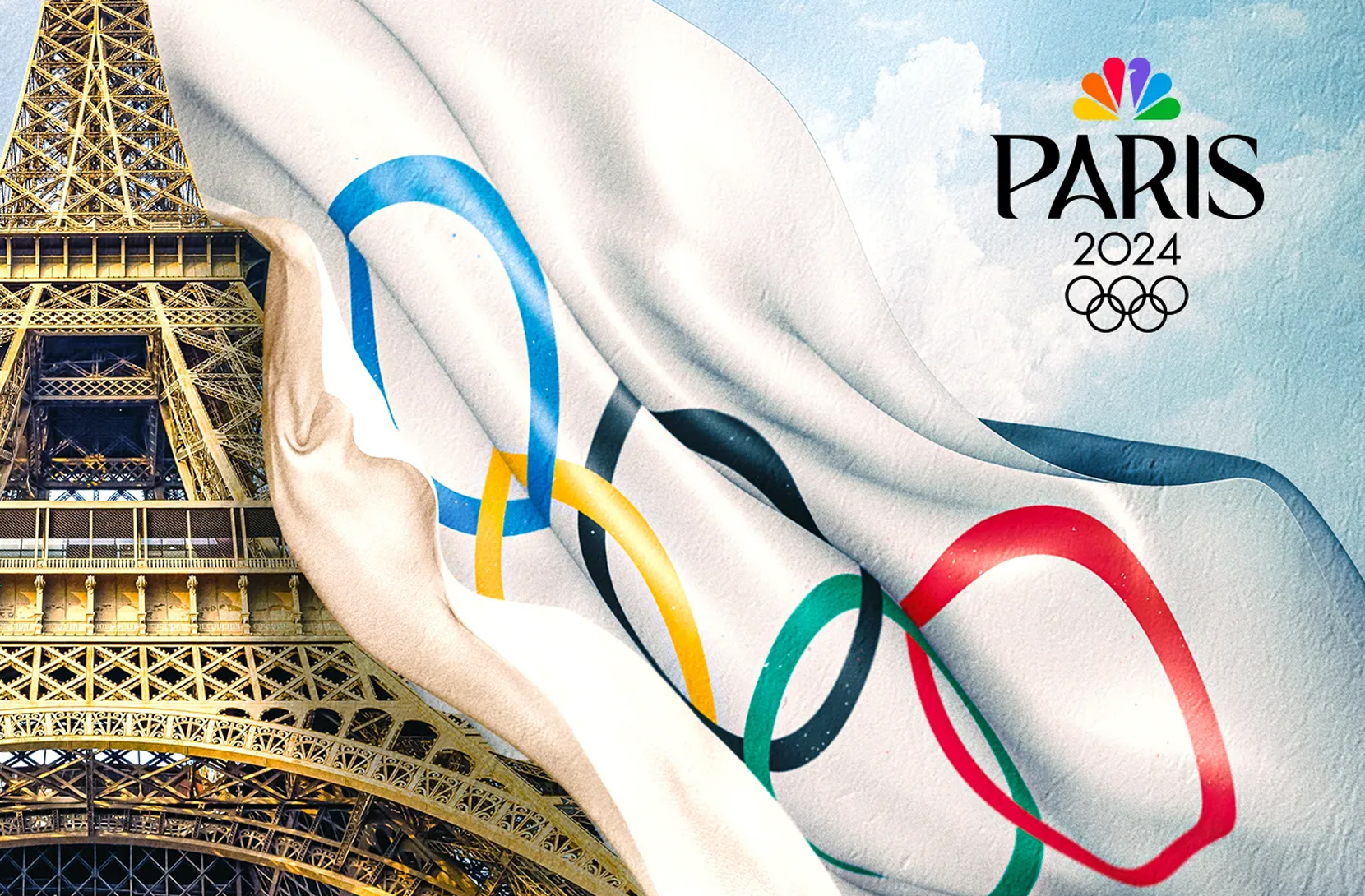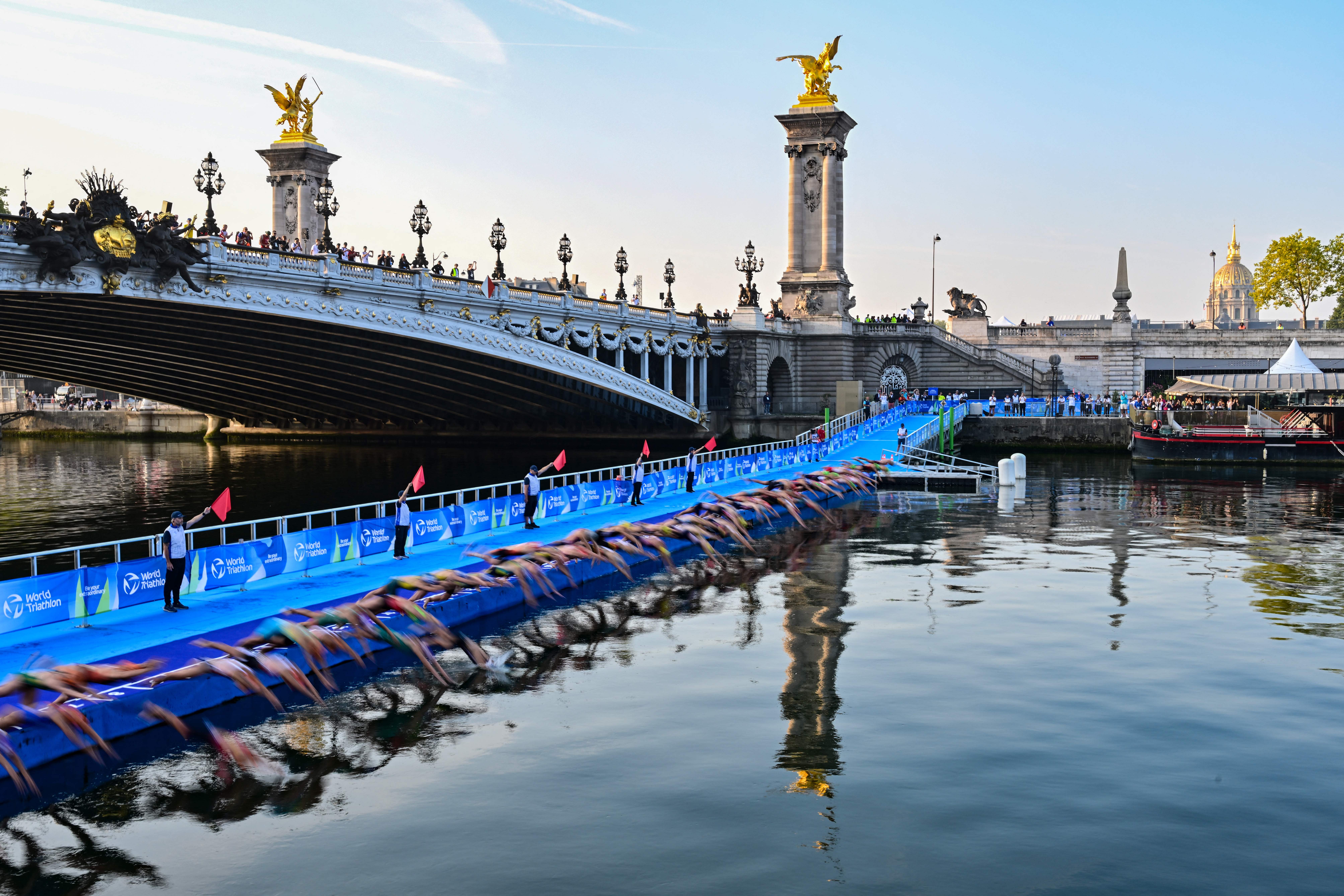
PARIS—Citius, Altius, Fortius has traditionally been the motto for the Olympic Games, Latin words for “Swifter, Higher, Stronger.” In 2021, the motto was officially modified to be Citius, Altius, Fortius – Communiter, meaning “Swifter, Higher, Stronger – Together.”
As we roll up to the 2024 Summer Olympics in Paris, July 26-Aug. 11, NBC, the official U.S. broadcaster for the games, will demonstrate its interpretation of the motto with a broadcast that is swifter, higher and stronger. The network has been working for nearly two years in both Paris and at the NBC Sports hub in Stamford, Conn., to ensure that everything has been pulled together, according to Darryl Jefferson, senior vice president of engineering and technology for NBC Olympics and Sports.
Pre-Configured, Pre-Tested and Pre-Installed
This will be Jefferson’s first games as head of NBC Olympics’ tech operations, succeeding long-time veteran Dave Mazza, who retired in 2022. Jefferson has been with NBC Olympics since 2008, managing Post Production and Asset Management teams and was instrumental in the development of the networks’ innovative Highlights Factory/Asset Management System.

“We started design and peer review about 20 months ago, with build, configure and test in our integration facility,” Jefferson said. “We tested video paths, workflows, delivery mechanisms and failure modes all before items shipped out. We ship gear mostly pre-configured, pre-installed, and pre-tested, for both speed of deployment and for peace of mind.”
With a broadcast as complex as the Olympics, with numerous venues and the need to integrate feeds from the primary Olympics video system, the number of moving parts is staggering. Take something like the intercom system—viewers are never aware of it, but it plays a crucial role in coordinating between all the different venues and crews.
“It has indeed been quite a challenge,” he said. “Our dedicated comms group has especially focused on inter-communication with our large presence in Stamford. Candidly, managing those comms-trunking resources at this size and scale has required re-thinking and expanding many of our core resources, and resources that are also sent out at our venues, as well. Part of the challenge of lashing up two cities far apart is seamlessly allowing folks to communicate.”
Seamless to Viewers
Moving its system to a new Olympics venue every two years is an incredible challenge, but NBC will ensure viewers will see a seamless broadcast—so seamless that many may not realize that although the action is happening in Paris, many of the commentators and on-air talent will be in Stamford.
(Read: NBC to Air Record Amount of Live Paris Olympics Coverage)
Among many benefits of this Paris-to-Stamford approach is that the network has less equipment to rip out and relocate—or abandon—after each Olympic broadcast. It seems counter-intuitive that having two such widely separated technical areas and operations is more efficient than having it all in one place, but the reality is that separation increases speed and efficiency.

“With new tools, robust networks, capacity with cloud infrastructure, and the ability to approach signal transport differently, there exists a whole host of new options today."
Darryl Jefferson, NBC Olympics & Sports
“The biggest leap is splitting large parts of our team between Paris and Stamford,” Jefferson said. “Transporting large quantities of cameras, effects gear and studios full of equipment all the way home has historically not been financially viable. In some cases, the latency was unacceptable. That split approach allows us to cover more sports with fewer total people traveling than just a few Games ago.”
However, between the time of the old four-year cycle and the new two-year cycle that took effect 30 years ago, the industry has gone through a revolution in connectivity and capability.
“With new tools, robust networks, capacity with cloud infrastructure, and the ability to approach signal transport differently, there exists a whole host of new options today,” he said.
Emerging Technologies
High-end sports broadcasts are among the first to use emerging technologies, and NBC’s preparation to broadcast more than 5,000 hours of live Olympics coverage from Paris is no exception. Add in the complexity of covering a sporting event spread over several arenas and locations, and it’s like preparing for the Super Bowl… times 10.
Jefferson and his team found there were several new things that had to be handled carefully for this Olympics broadcast, which will be broadcast in 4K/HDR and 5.1.4 immersive audio.
(Read: Peacock to Use AI-Generated Al Michaels' Voice for Recaps of Olympic Games)
“It may be a tie between getting HDR support everywhere we may need it, and the large cut over to support IP in many places,” he said. “Although we’ve had important experience with both, there exist so many devices, solutions, vendors and third parties that do not support wide color gamut today, or equipment through which color information doesn’t survive.
“Testing every graphics device or element of delivery to ensure all is consistent has required a decent amount of patience,” Jefferson added. “In a similar way, building a resilient and nimble IP system has also been a process.”
I assumed that the native Olympic video infrastructure would be 4K/UHD. However, Jefferson said that is not the case. “Our format is 1080p HDR [HLG] at 50Hz,” he said. “We are thrilled that this mezzanine format will be supported at every venue and site.”
As you might imagine, a very large number of vendors provide the gear to make the broadcasts work. In addition to the gear that NBC brings to the Olympics, the Olympics organization has its own broadcast service that works behind the scenes and supports all national broadcasters. The Olympics Broadcast Services (OBS) positions all the cameras at the events and provides feeds and much more to the dozens of national broadcasters, including NBC.
“We have worked with OBS on their camera positions and event orchestration,” Jefferson said. “We also worked with Sony on switchers, cameras and monitors, with EVS on replay devices and IP orchestration, with Grass Valley/Cisco on core /IP routing, Avid on editing and asset management, Chyron on graphics, Riedel on SimplyLive, and so many more.”
‘Healthy Mixture’ of IP and SDI
One of the most basic decisions assembling a system of this size is where to use the SMPTE ST 2110 IP video standard and where to use the older SMPTE SDI standard. Where and how these two are used makes a big difference in how signals are routed, and routing signals at the Olympics is one of the core tasks.
“We have a healthy mixture of both, but are about 60% ST 2110 handoff, venue and core orchestration,” Jefferson said. “In some cases, we support both formats within a Tech Center, or gateway translation to convert one to the other. Fortunately, we have spent the last few Games [since Tokyo] making the transition over time, and certainly learning all the lessons.”
(Read: NBCU to Expand Accessibility Efforts to Record Levels of Summer Olympics)
Jefferson detailed how the NBC Olympics team took IP/SDI integration step-by-step in order to maximize compatibility and minimize conflicts. “First [we used] a lifeboat router, larger core switches, and a split router in support of both HDR/SDR,” he said. Now [we have] one single format, signal redundancy and a streamlined approach. Each of these steps has been critical in uncovering the complexity and flexibility of IP.”
In addition to SDI and ST 2110, NBC is also using some of NewTek’s semi-proprietary Network Device Interface (NDI) standard. “We are using NDI in some areas, specifically NDI v6, with support of HDR and enhanced audio,” Jefferson said.
Viewer Insight
Jefferson promised a host of new features for NBC’s broadcast of the Summer Olympics. A lot of it sounds technical, but the goal is to give the viewer insight that wasn’t previously possible.
“We have a whole trove of new technology, some of which is well behind the camera [ST 2110 and Dante, HDR and ATMOS everywhere], new encoding mezzanine formats, and also a good deal of enhancements to bring viewers further behind the scenes,” he said. “Backstage cameras, audio from coaches, cameras in the stands with families, even biometrics on family and coaches. The goal of all this technology is to bring more elements of storytelling around each athlete’s journey.”
The Olympics are more than just another big sporting event. It is an international cultural experience, a massive stage on which scandals are magnified and missteps are ridiculed. Bad guys have been known to use this hyper-focus of media to perpetrate big crimes—and viewers expect that such coverage will be captured with all the depth and clarity of the sports events themselves.
However, the winning part of the broadcast is the part that tells the small stories: The struggles, burdens, perseverance and stamina of the individuals who participate. When the camera shows the sweat on a face and fierceness in the eyes, it is giving you what you can only get from an experienced and well-equipped television crew.
This summer, NBC stands poised to deliver its best Olympics yet.







